Southern Africa - South Africa, Botswana, Zimbabwe, Zambia, Namibia
August 23 - September 15, 2016
Part Two, Page Four - Kruger National Park, South Africa
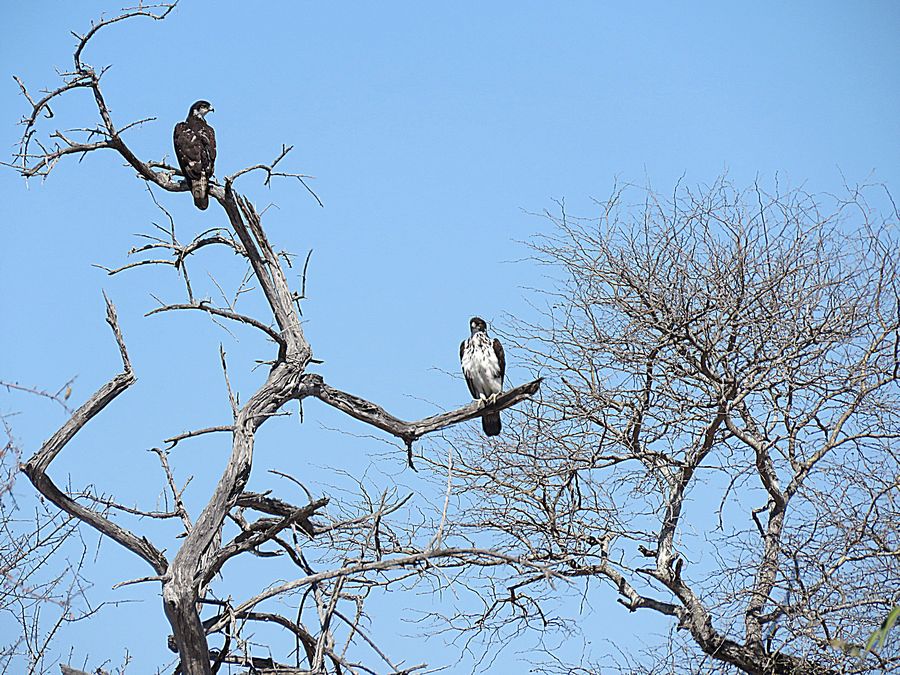
African Hawk Eagles - Found in woodland areas and dense
thornbush areas. Usually seen in pairs as they maintain a
permanent home range. They hunt from perches and while in flight,
trying to take mainly guineafowls and francolin by surprise.
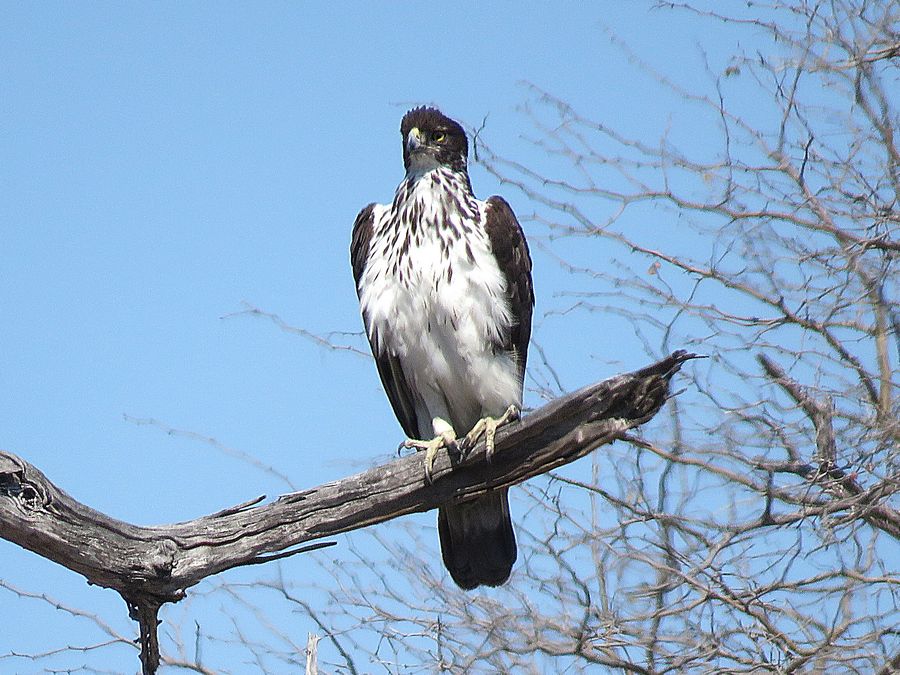
The African Hawk Eagle has almost entirely black plumage with
a dark gray tail. The throat, neck, breast, and belly is white
with bold black streaks.
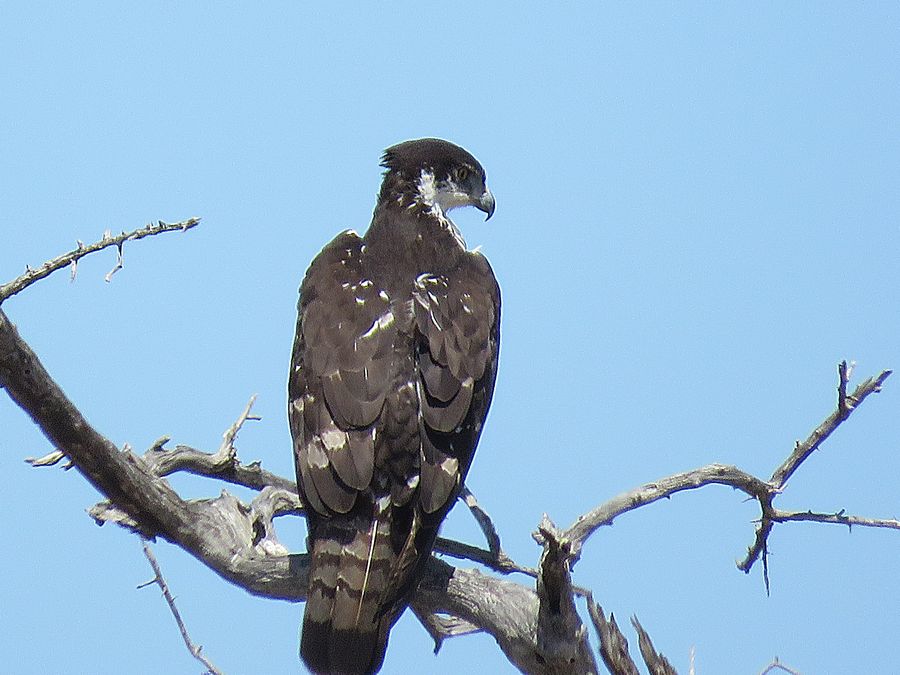
You can see the gray tail with with a band of black at the bottom.

Giraffe moving around trees
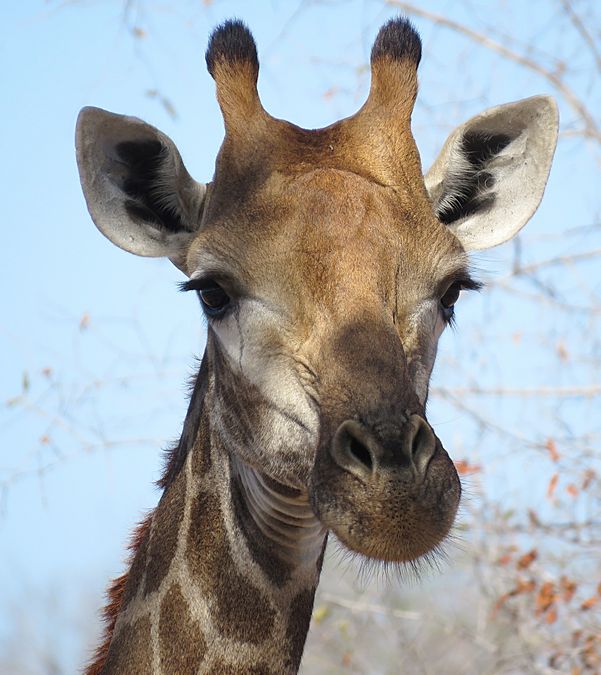
Figure out whether this is a male or female based on
previous descriptions.
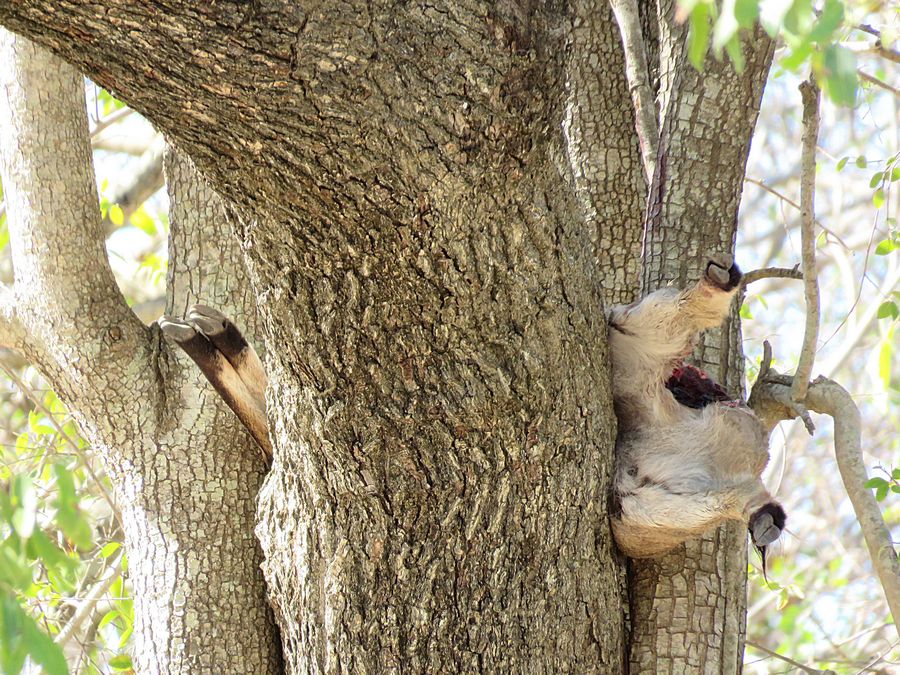
An antelope carcass in a tree. Our local guide, Chris Turtle,
knew that this was certainly a leopard kill and that the
leopard had to be nearby. He spent a lot of time trying to
spot the leopard. We looked too, but we could not see anything.
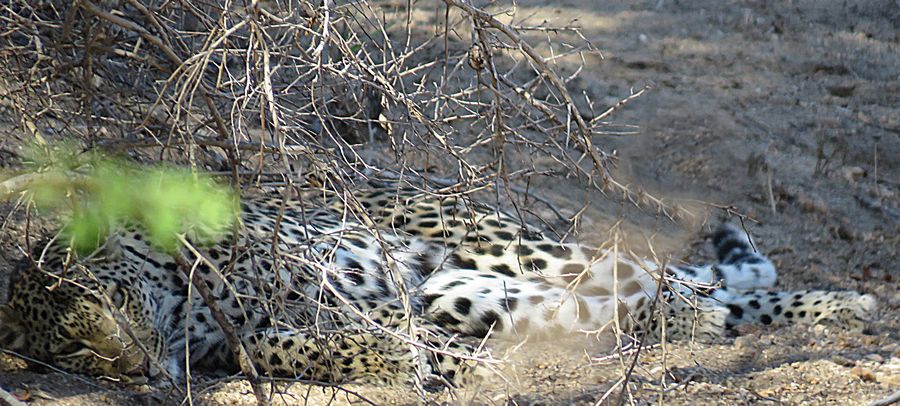
Finally, Chris spotted the leopard and directed our attention
to it. It was clearly resting after a meal. Leopards are muscular
with short, powerful limbs.
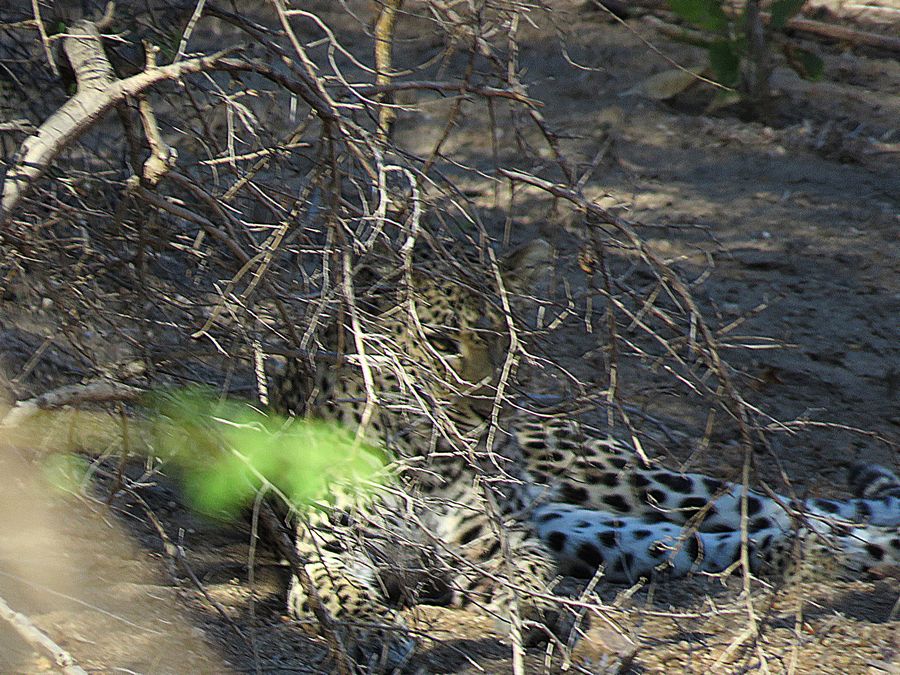
For a brief time, it lifted its head, which you can see through
the tree branches. The head is broad with strong jaws and long
white whiskers. The ears are small and round.
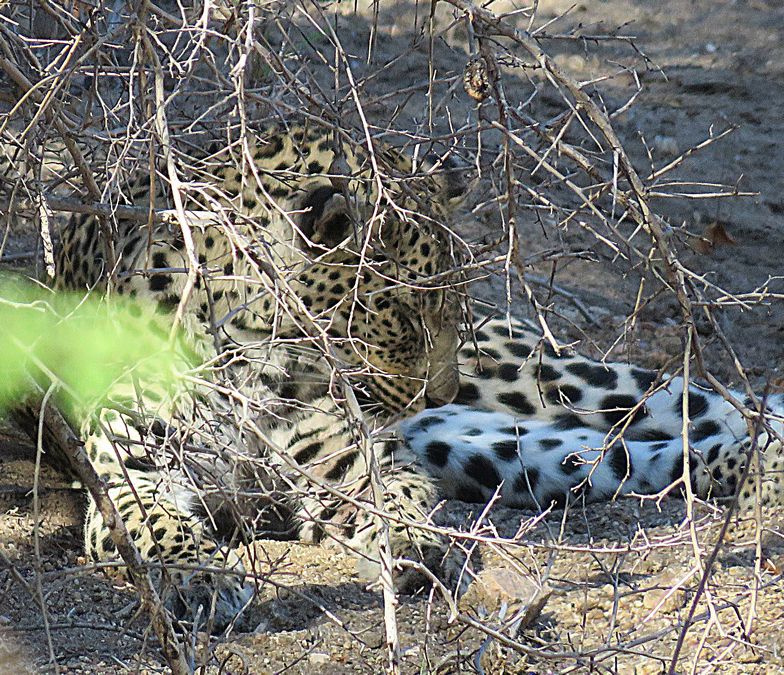
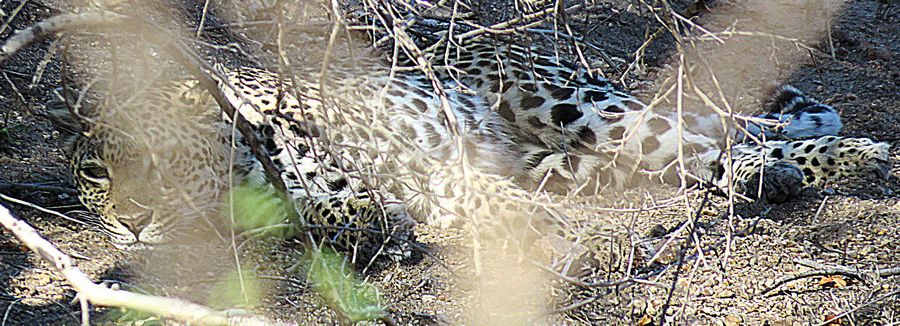
The coat is covered with black/brown spots. The tail is long,
spotted but terminating with a series of black and white rings.

Eyes are open here. Largely nocturnal, they prey on many
animal species, which they often carry high into a tree
to avoid the attention of other predators.
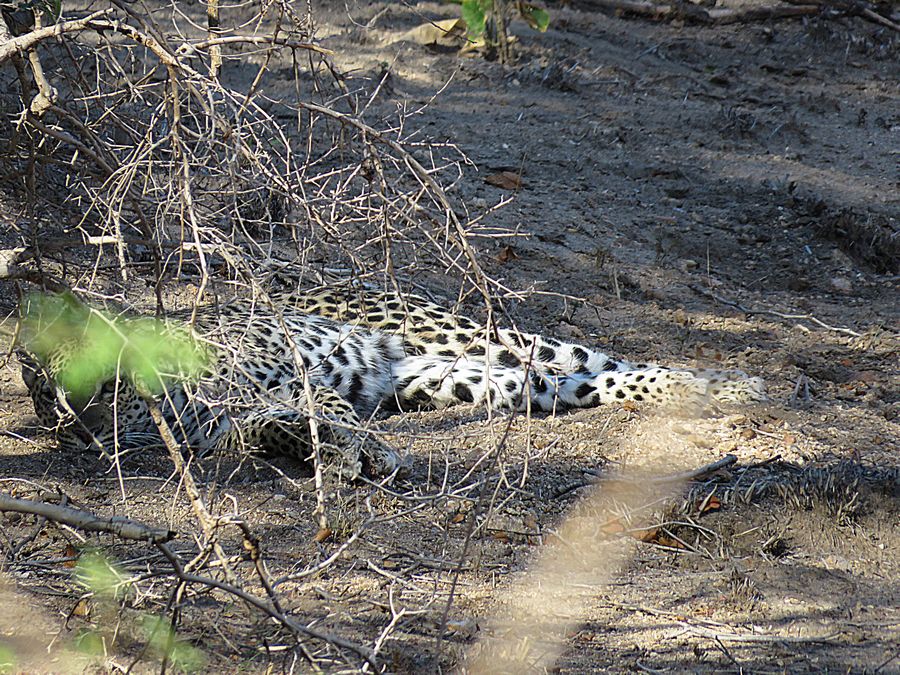
Leaves are covering part of the head, but you can see that
the leopard has both eyes open.
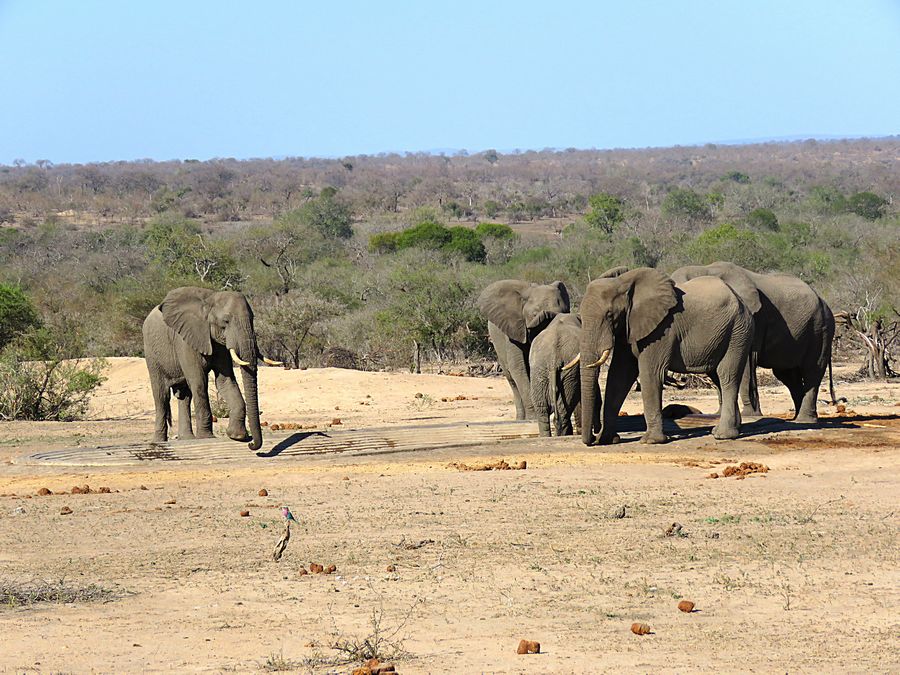
Elephants out on bare, dry ground. Looks like there was
a water retaining container that they were drinking out of.
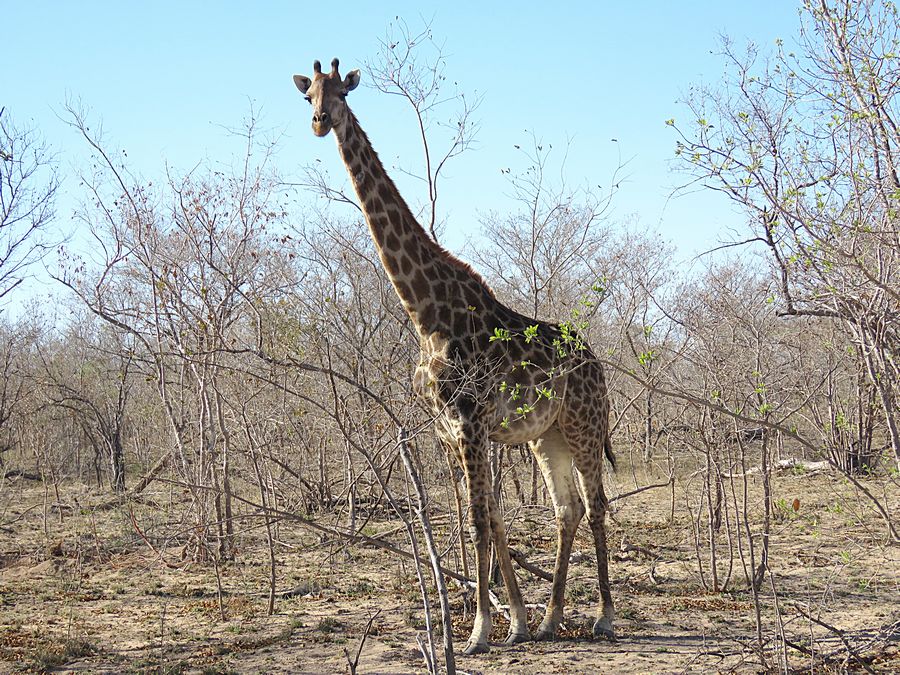
This photo reveals a view of the giraffe's hooves. Giraffes only need
to drink once every few days. Most of their water comes from all the plants they eat.
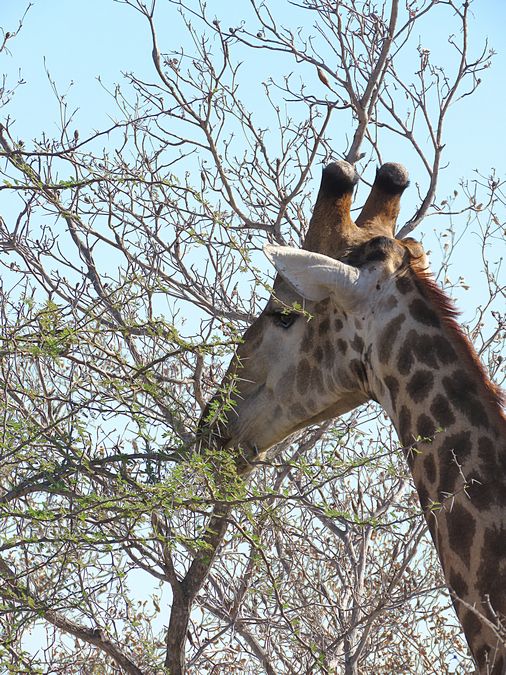
Giraffes spend most of their lives standing up; they even
sleep and give birth standing up.
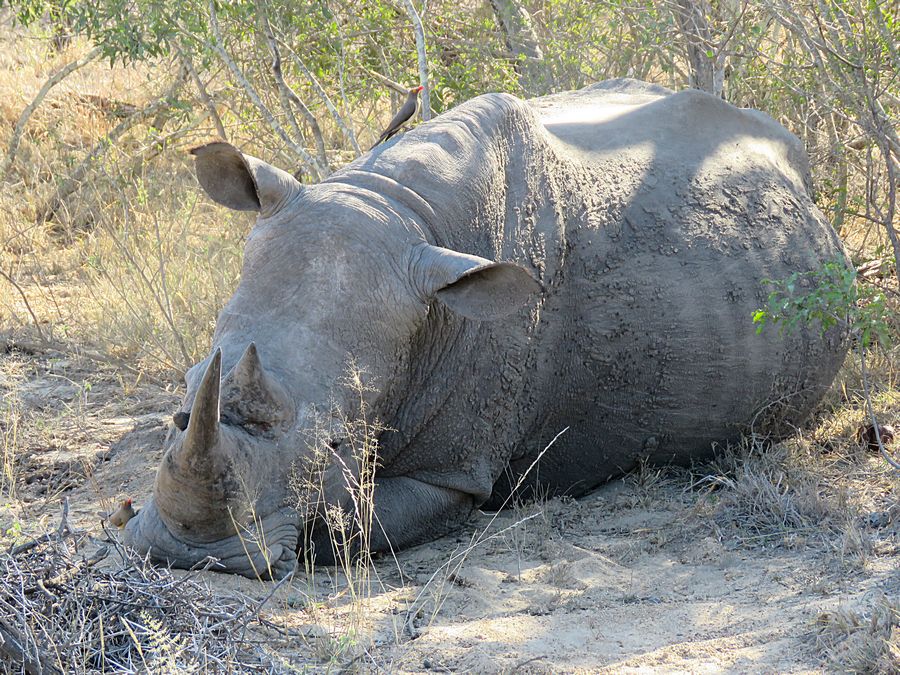
A rhinoceros sound asleep right next to the road with
a red-billed oxpecker on top.
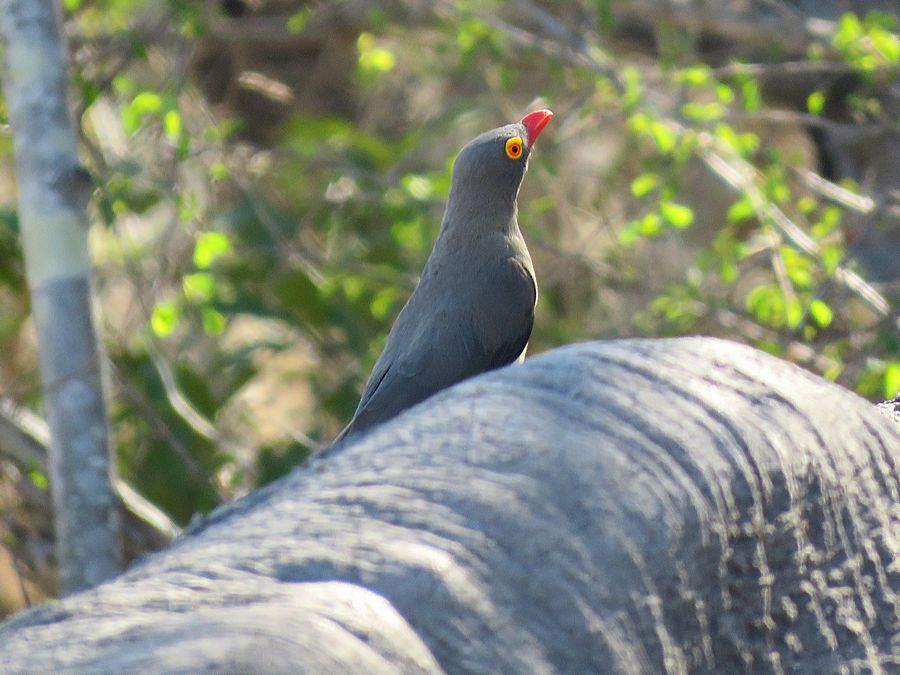
The red-billed oxpecker, like the yellow-billed oxpecker,
ride on the backs of mammals to gather ticks with a scissor
motion of the bill.
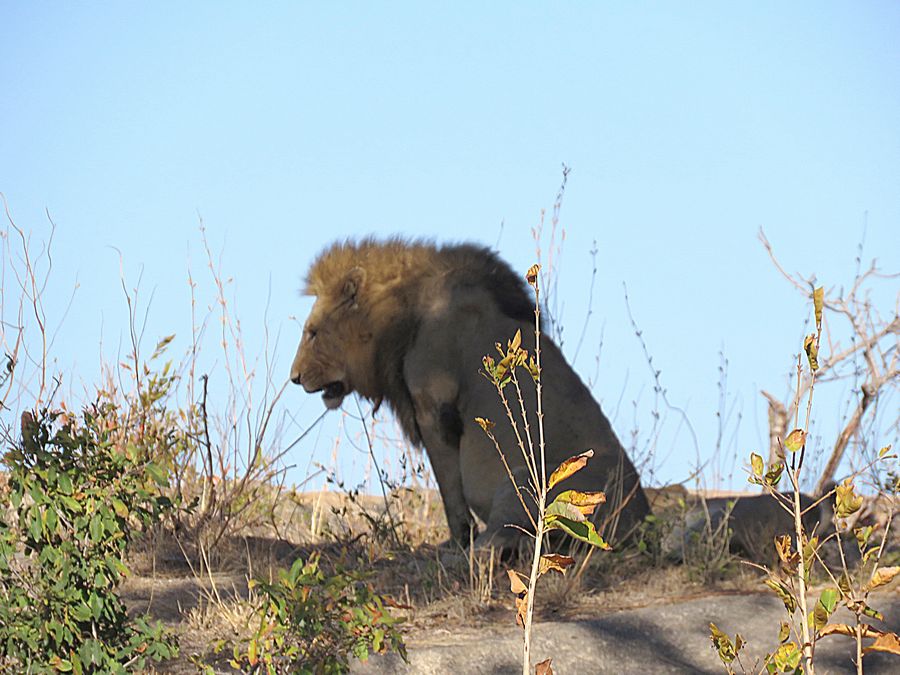
A male lion up on a hillside, after mating. Female
was lying flat on the ground behind him until she
walked away possibly to get water. During the periods between
copulation the pair may lie down next to each other or walk
a short distance.
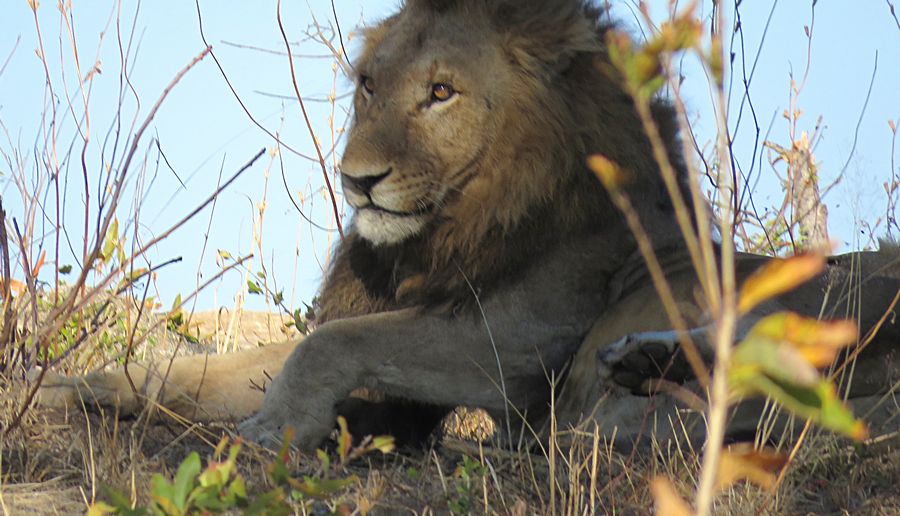
Our guide said the male and female would probably continue
mating for a while, about every 15 to 20 minutes for up to 5 days.
This male looks pleased with himself.
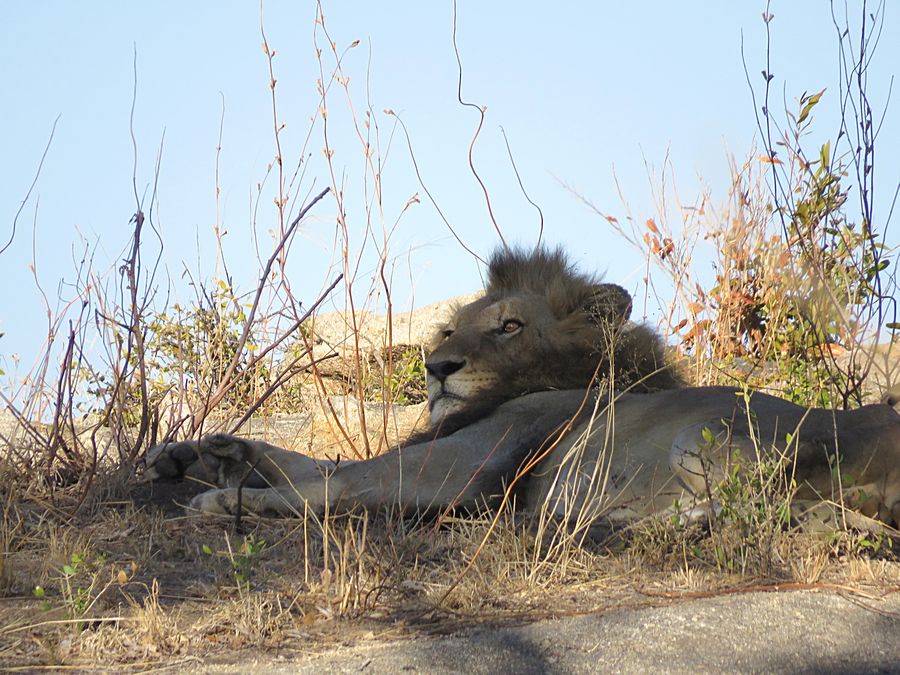
Male lions will check whether the females are in heat by sniffing
their reproductive organs.
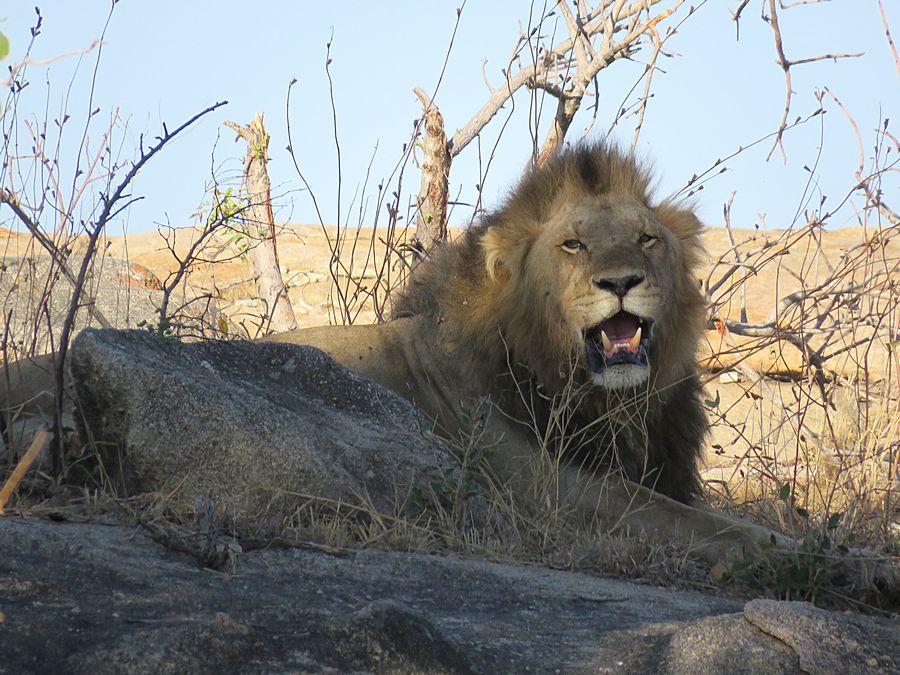
If there is more than one dominant male with the pride, the female
will often move onto the next male once she's exhausted the first.
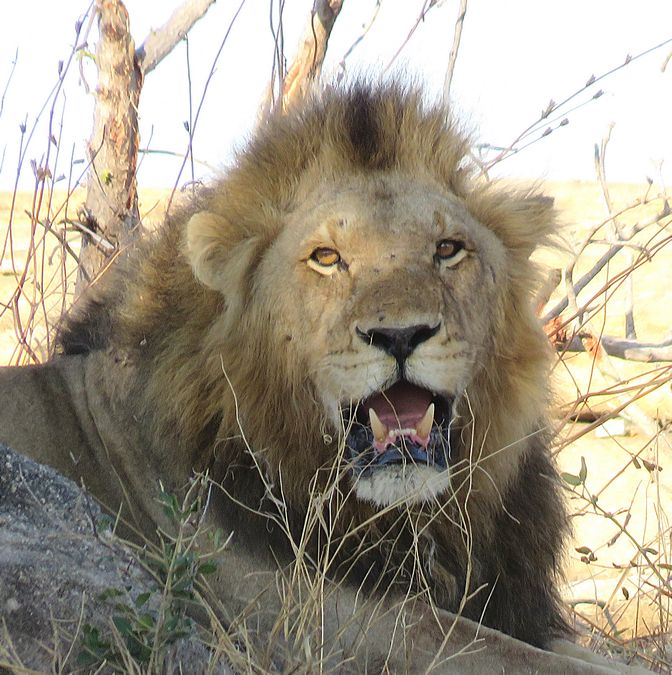
Lions have no particular breeding season. Male lions become sexually
mature at around 26 months old, but are unlikely to breed before the age
of four or five, primarily due to a lack of opportunity until they are
large enough at around this age to take over a pride and therefore
its breeding rights.
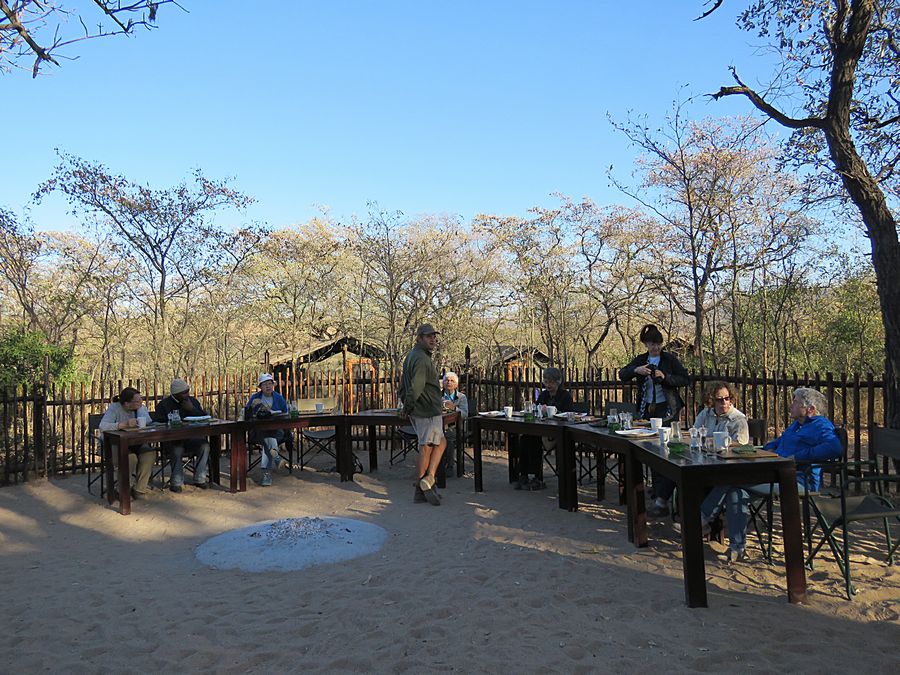
Final morning at Buffalo Rock Camp at Kruger. We ate meals
outdoors. Here breakfast is underway. Some of the tents are in
the background.
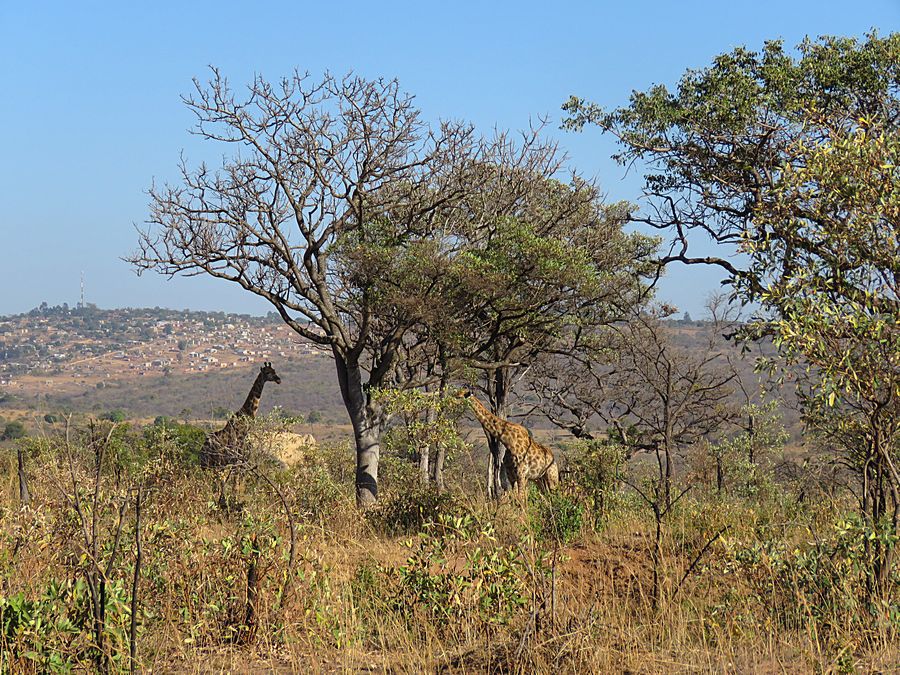
As we were being driven to the Kruger Airport in Nelspruitt,
South Africa, we saw more animals including these giraffes.
Giraffes only need 5 to 30 minutes of sleep in a 24-hour period.
They often achieve that in quick naps that may last only a minute
or two at a time. You can see the town in the distance.
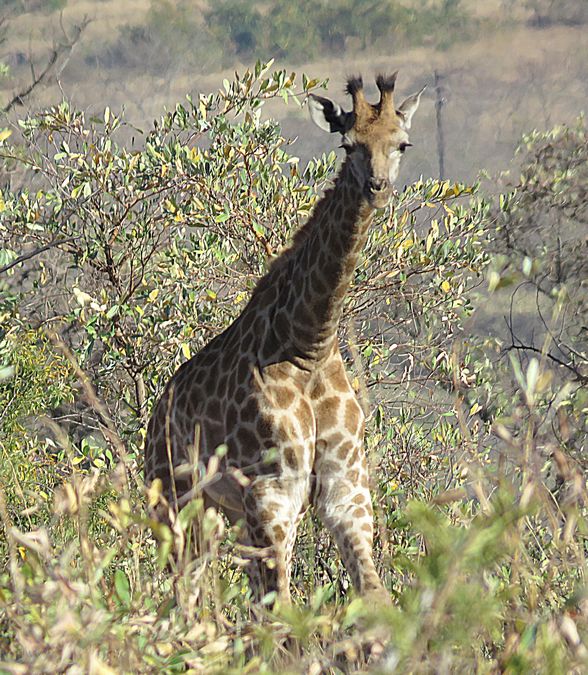
Baby giraffe. The giraffe calf can stand up and walk after about
an hour and within a week, it starts to sample vegetation.
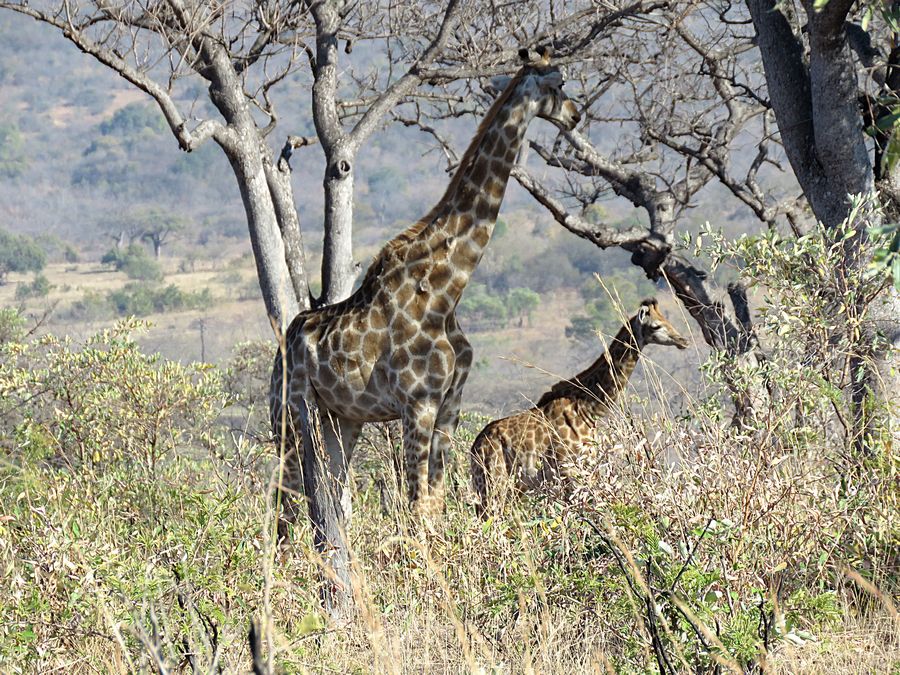
A giraffe's spots are much like human fingerprints.
No two individual giraffes have exactly the same pattern.
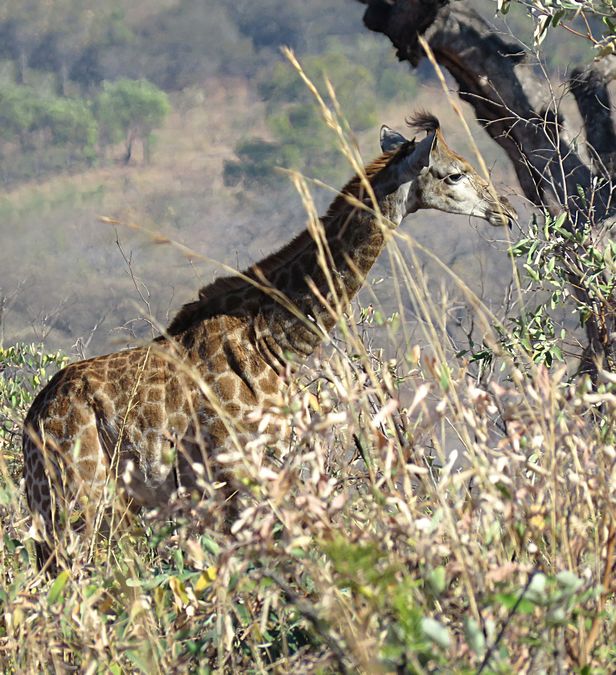
Despite the females' attempts to stand over their calves during
attacks by lions, spotted hyenas, leopards and African wild dogs,
many calves are killed in their first few months.
Link to Part Three, Page One - Hwange National Park, Zimbabwe
Link back to Part One - Okavango Delta
Pat's Home Page